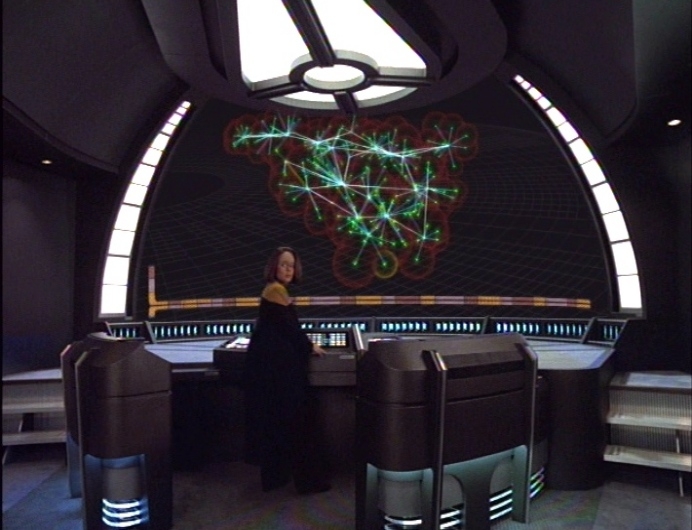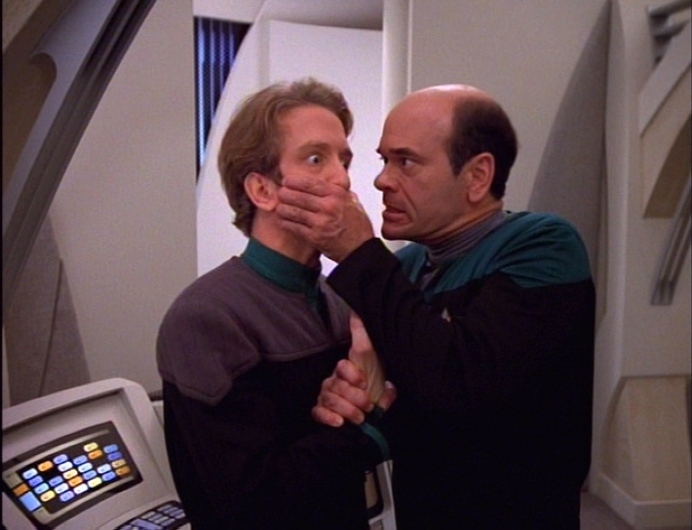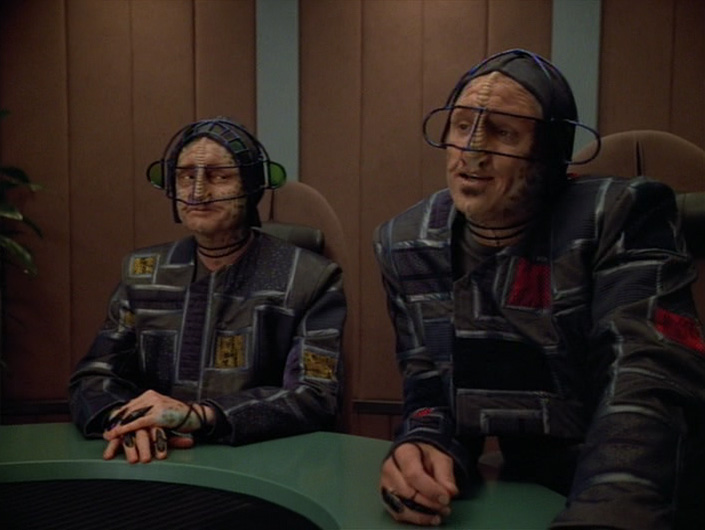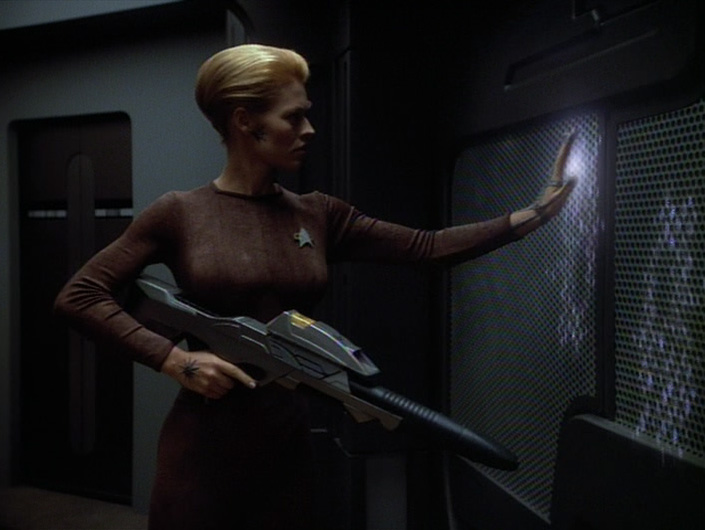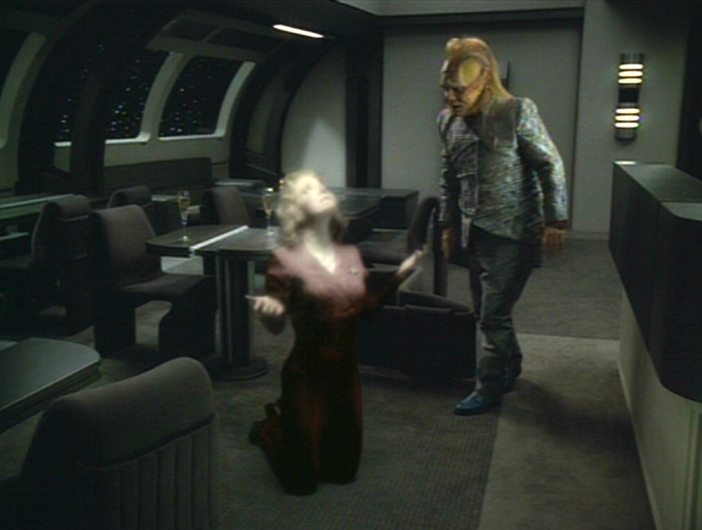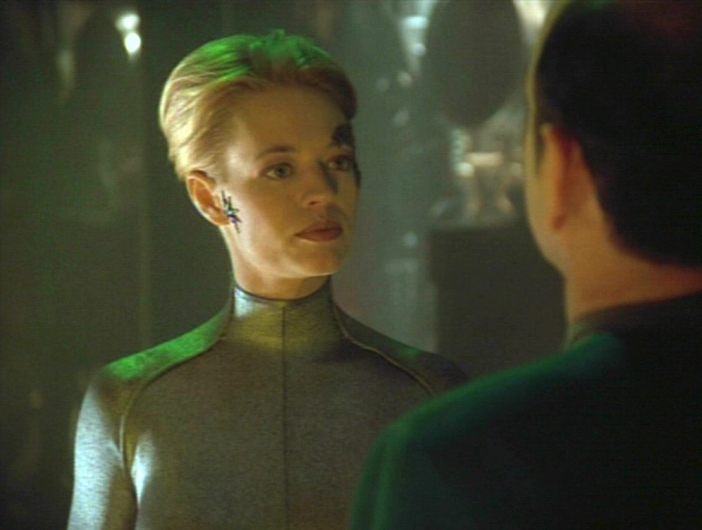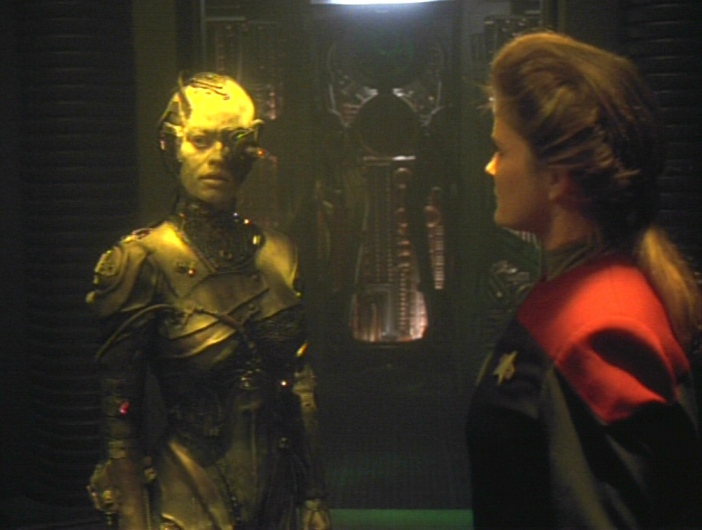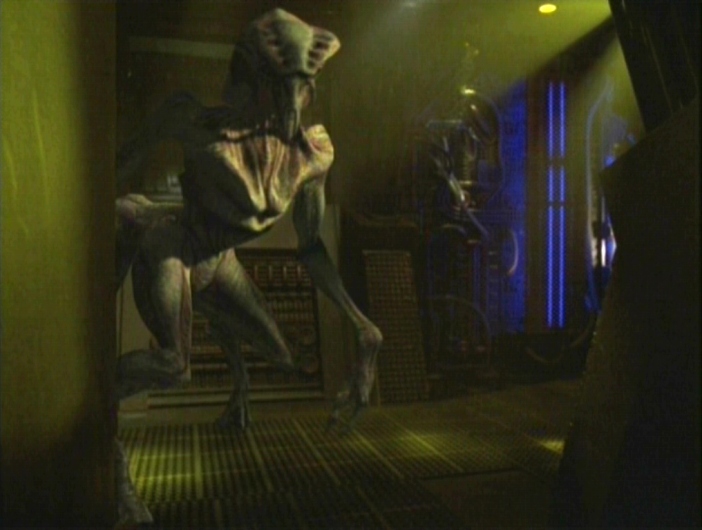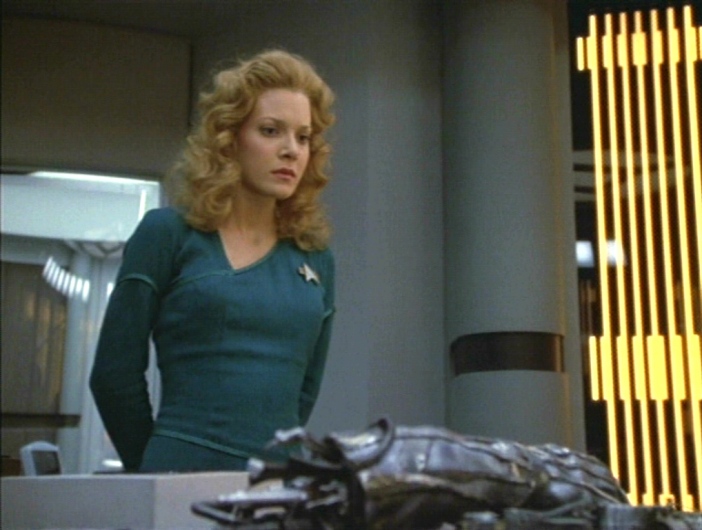
Voyager encounters what appears to be Starfleet headquarters in the middle of the Delta Quadrant. Chakotay and Tuvok check it out, and determine that it’s actually a simulation built by Species 8472 (back from “Scorpion”) as a way to learn about the Federation, complete with members of the species posing as Starfleet officers (hmmm) and a recreation of Boothby (Ray Walston) whom we met back in TNG’s “The First Duty”. 8472 is using the recreation to prep for war against the Federation after Janeway allied Voyager with the Borg (way to go, Kathy). Eventually, Janeway and Co. talk down the now reasonable 8472s –Voyager agrees to let 8472 look at the weapons developed in “Scorpion” — and the sides cease hostilities.
Why it’s important
Reaching a tentative peace with Species 8472 is pretty significant, considering how dangerous they seemed back in “Scorpion”. What looked to be a new enemy with the intent of conquering the galaxy fades away here, and that (as we’ll discuss) is a problem.
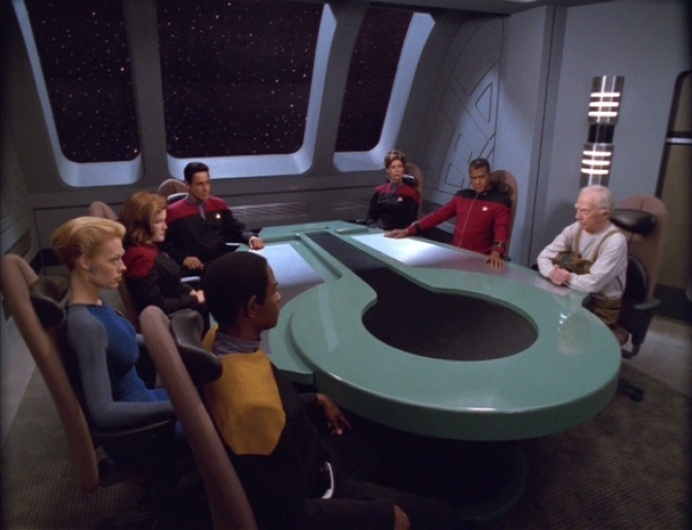
What doesn’t hold up
Species 8472, when we first meet them, were freaking terrifying. Their motto — “the weak shall perish” — was right up there with anything the Borg or the Jem’Hadar threw at our heroes. And even being touched by an 8472 (initially) caused humans (and presumably all humanoids) to be eaten alive and transformed.
But this episode seriously undercuts all of that and makes 8472 appear pretty freaking reasonable — too reasonable, really. I guess the idea is that their experiment playing humans (and other Federation races) and their interaction in this episode with Voyager gave them the insight that the Federation wasn’t actually a big threat to them. But it all comes together way too easily, considering the hand the creators dealt themselves in “Scorpion”. Having representatives of 8472 sitting (as humans) at Voyager’s conference table and working out a peaceful deal was just … weak.
Beyond that, how did the 8472s not spot Chakotay as an outsider more easily? I hate to single out such a small thing, but he was at “Starfleet headquarters” with his Maquis rank insignia (which looks a lot different than what normal Starfleet officers wear on their collars). And really, the whole idea that the 8472s needed to set up a fake Starfleet HQ to better understand the Federation is pretty weird. If you’ll recall, they could read Kes’ thoughts back in “Scorpion”. What info did they think they’d get that would be worth such an elaborate setup in this episode? I’m not saying that the experiment couldn’t have yielded some interesting info — but would it have been enough to justify the effort? I doubt it. And keep in mind that Boothby mentions several other facilities conducting similar activities.
Oh, and Chakotay makes reference to the last time he was at Starfleet HQ, in March 2368, when he resigned to join the Maquis. As we’ve discussed before, this is part of Voyager’s attempt to retcon the Maquis’s existence well before we first learned about them in “The Maquis”. Chakotay could have resigned in protest of the new treaty with the Cardassians in March 2368. But if he resigned and joined the Maquis, he probably should have been written as a founding member.
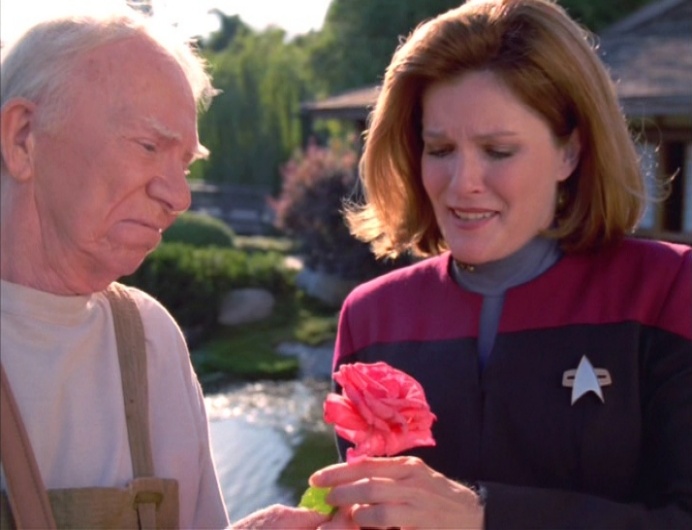
Final thoughts
Some readers might wonder why we didn’t review “Hope and Fear”, the final episode of Voyager’s fourth season. It’s pretty rare when the events of a season finale don’t make it onto the Tapestry, but that episode really didn’t tell us anything we didn’t already know and didn’t advance Trek’s bigger storylines. The most interesting idea in that episode is that Janeway’s controversial moves in “Scorpion” to help the Borg pissed off some Delta Quadrant residents who then plotted revenge. Whoops. But, hey, that’s our Kathy!
That said, we almost reviewed the episode because it shaved a few months off of Voyager’s trip home (thanks to the quantum slipstream drive). But a few months just didn’t seem significant enough.
Finally, we learn something interesting in this episode: Voyager’s crew is down to 127. This means about 25 have been lost since the crews integrated in “Caretaker”. Frankly, that’s a lot — about 17 percent of the crew — but we really don’t see any staffing issues, other than Paris’ presence starting in season four as a medic in sickbay. That so many people were lost (and that more will be lost) is extremely notable given Janeway’s actions going forward. But it also sort of makes sense, given everything we’ve seen previously.
Of course, Voyager’s crew magically goes back to just under 150 in a a later episode. Maybe some of the 8472s posing as humans stuck around as crew replacements?
Coming later this week …
Voyager crashes and only Kim and Chakotay survive.

